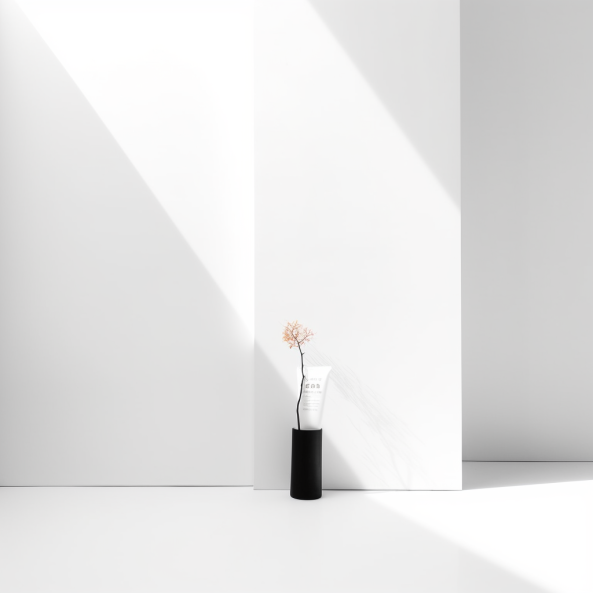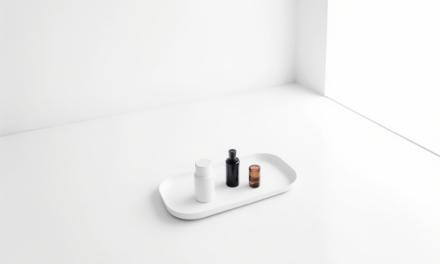How to Start Anti-Aging Skincare?
Skin aging – for now – is a natural part of living a long life. We can’t fully prevent or undo it.
But here is the good news. Good skincare, nutrition and active lifestyle can have a huge difference for how our skin looks and works as we age.
In this post, we’ll dive into the science behind skin aging and explore the different factors that can impact our skin’s health. We’ll also discuss some of the best skincare strategies to help you start your anti-aging journey and keep your skin looking its best.

The two forces behind skin aging
There are two main forces that drive aging: intrinsic (from inside) and extrinsic (from outside). The first force is a degradation that happens in our bodies with age, even if we are in perfect condition, and we cannot stop it, at least not yet. The second aging comes from the impact of the environment around us.
It’s a very crude metaphor, but it can help to understand the difference between the two forces. Take a textile bag, for instance. Imagine we place it in a museum, under glass protection. It will stay like new for a very long time, but eventually, it will degrade. This is the work of intrinsic aging in this crude example.
Now, imagine this bag lives a normal life. It gets carried around in the sun and wind, it bears the weight of heavy groceries, and it gets washed and dried. This bag will disintegrate much faster than the one in the museum. This would be the work of “extrinsic” aging.
As with the bag, extrinsic aging works much faster than intrinsic aging. This is why signs of skin aging can appear quite early in life, way sooner than our biological clock would dictate.
On a positive note, if we control the drivers of the “outside” (extrinsic) aging, we can have young-looking skin for a long time. Deep wrinkles and age spots are a result of outside aging. It’s not possible to avoid wrinkles entirely, but the ones we get from intrinsic aging appear later in life and are milder.
The purpose of anti-aging skincare is to prevent the wear-and-tear of life on our skin and help it heal the damage that still occurs (luckily, our skin is not a bag and can restore itself, at least to a large degree).
So, what are the wear-and-tear factors?
The strongest of them is sunlight.
Sun damage
Sunlight is a form of radiation. Of course, it gives us life and good mood, so no sun-hating here :). But sunlight comes with serious side effects. Sun (UV) light is a powerful generator of free radicals. These particles affect our skin cells and make them less efficient in what they do. As a result, skin loses elasticity and can develop pigmentation spots. Darker skin has stronger natural protection from UV light compared to pale skin, but it still ages it. The first signs of sun-induced aging for people with dark skin tones are usually pigmentation marks (age spots) rather than wrinkles.
Scientists believe that over 80% of facial skin aging is due to low-grade chronic sun exposure, meaning daily exposure to sunlight, excluding episodes of sunburn.
Scientists believe that over 80% of facial skin aging is due to low-grade chronic sun exposure, meaning daily exposure to sunlight, excluding episodes of sunburn.
This is why the holy grail of anti-aging skincare is daily sunscreen. It needs to be broad-spectrum, protecting from both “burning” UVB rays as well as UVA light that does not cause sunburn but damages our skin “quietly.” It also needs to have an SPF of 30 or higher.
If you’re tired of reading this article, I have good news for you: you’ve already got the main point. If you want to delay and reduce skin aging, use a broad-spectrum sunscreen SPF 30+ every day. No other product on this planet can give you a comparable anti-aging effect. (And things are frankly worse on other planets – you’d need to wear a proper full-body UV shield just to survive on Mars).
Free radicals
Sunscreens do not fully block UV rays. Additionally, because we’re busy living life, most of us don’t wear sunscreen 100% of the time during sun exposure. As a result, our skin is still exposed to sun-caused free radicals. Moreover, things like air pollution, cigarette smoke, and some normal biological processes in the body also generate free radicals that interfere with how our skin cells work, causing aging.
Fortunately, there are antioxidants that can neutralize free radicals and prevent them from harming our skin. The most potent source of antioxidants for our skin is raw plant food. This is why a healthy diet is an important part of anti-aging skincare (if we think about it as caring for our skin, rather than shopping therapy at Sephora).
We can also apply antioxidants to the surface of our skin to help it neutralize more free radicals. It is not as effective as eating them but can have some effect. The most potent and well-studied topical antioxidant is L-Ascorbic Acid (a form of Vitamin C). This is why it makes sense to add a Vitamin C product to your topical skincare regimen. To get results, use a product with a 10-25% concentration of Ascorbic Acid once a day. Go for an uncolored product because Ascorbic Acid loses its antioxidant power upon contact with air and light, and when it happens, it turns orange. If your Ascorbic Acid product changes its color to orange, it’s a sign that it has lost a big chunk of its effectiveness and it’s time to discard it.
There are other topical anti-oxidants like natural chemicals in green tea and many other plant extracts. Like Ascorbic Acid, they are also unstable and lose effectiveness quickly. Also, it is very hard to find them in skincare products in a concentration high enough to have an effect. (And in very high concentrations they are likely to cause skin irritation).
Another compound, Niacinamide (Vitamin B3), holds a separate place in the anti-free-radicals skincare army. It is not an anti-oxidant itself, but it can increase the ability of our skin to produce its own antioxidants. In food, Vitamin B3 is in meat, fish, brown rice, seeds, nuts and legumes.
Not being an antioxidant itself is huge advantage of Vitamin B3 (Niacinamide) in the topical skincare world. It means that it is stable and is less “afraid” of exposure to air and light. This is why it’s a great active to have in a moistruizer, serum, or sunscreen. Look for concentrations of between 2% and 5%.

Undoing free radical damage
Unfortunately, even with all anti-oxidants, free radicals still reach our skin and cause trouble. This is why some skincare products aim to repair the damage that has been already done. The most effective actives in the products like that are retinoids.
Retinoids are form of Vitamin A. They are in our body naturally. In skin, they work as “communicators”. They “tell” the skin cells to “behave well”: produce more collagen & elastin and control the production of skin pigment melanin. There are different forms of retinoids that can have this effect (and it is a little complicated). For practical skincare purposes, it’s enough to note the most effective retinoid formats:
- Tretinoin (available on prescription only in most countries)
- Adapalene (it is mostly used for treating acne, but has an anti-aging benefit too. It’s available OTC in the US and a few other countries, but is prescription only in the EU and UK)
- Retinyl retinoate
- Hydroxypinacolone retinoate
- Retinal
The effective concentrations of the non-prescription retinoids start at about 0.02% and can go up to about 1%.
We recommend using products with these retinoids no more than once daily. If your skin is sensitive, use it less often (1-3 times per week). The same goes for when you are in your first 1-2 months of starting a retinoid. (Retinoids often cause skin irritation. It gets better once skin “gets used” to them – hence the recommendation to start with them slowly). Unfortunately, some people cannot tolerate retinoids at all because of the irritation.
We have already talked about Niacianamide as a “sort of” anti-oxidant. Great news is that somewhat similar to retinoids, it can also “talk” to skin cells. Its communication is different from retinoids, but it leads to the same good effects: more collagen production and less pigmentation.
Inflammation and skin aging
Inflammation is a natural skin response that helps our body fight infection. As part of this process, the skin destroys its collagen and elastin. It makes sense when fighting a disease (so new, healthy tissue can grow). The problem is that if our skin is in an inflamed state a lot, more collagen and elastin gets destroyed than renewed. As a result, we get more wrinkles and less tone. Inflammation also leads to melanin production at the site of trouble, which can result in pigmentation spots. The risk is higher for darker skin tones.
What are the triggers of inflammation? The obvious and significant ones are physical skin trauma and infection. This is why it’s important to avoid physical impact on the skin, including physical scrubs and brushes.
UV light also triggers inflammation (back to sunscreen!).
Skin irritation and allergies are other major sources of inflammation. This is why we recommend avoiding unnecessary common irritants in anti-aging skincare (these include fragrance, essential oils, many plant extracts, formaldehyde-releasing preservatives). The trouble is that effective anti-aging topical actives can also be irritating. This is certainly true for Ascorbic Acid in high concentration and retinoids.
If an anti-aging active causes irritation, it is likely to have a net-negative effect on our skin. (As in the benefit gets undone by the harm caused by the inflammation). This is why it’s important to use anti-aging actives cautiously. The goal is to strike a balance between good actives in effective concentrations and how much your skin can take without irritation. When in doubt, use fewer actives in total, lower concentrations, and less frequent application. Be especially careful if your natural skin tone is olive or darker.
Exfoliating acids and anti-aging
Glycolic, mandelic, and lactic acid (called AHAs, or alpha-hydroxy acids), lactobionic acid, and gluconalactone (called PHAs, or polyhydroxy acids) can also have an anti-aging effect in topical skincare.
Scientists do not fully understand why this effect happens. The most popular explanation is that this effect is due to exfoliation. These acids help to shed the uppermost layer of the skin, bringing literally younger (or newer) skin to the surface. It is especially effective for getting rid of pigmentation marks quickly. However, this does not fully explain the positive effect on collagen production. It is possible that the anti-aging effect of the acids is a by-product of exfoliation (involving calcium ions and becoming complicated quickly).
Here is a practical conclusion: removing the upper layer of your skin is not particularly anti-aging. Physical scrubs and brushes won’t have an anti-aging benefit, only exfoliating acids would.
Exfoliating acids can have a major side effect. They thin the upper layer of the skin, making the skin more reactive and prone to irritation. And since irritation = inflammation = more aging, we want to avoid it. We recommend being extra careful with exfoliating acids, especially if you have dark skin.
Learn more about the top anti-aging actives, effective concentrations and how to include them into your skincare regimen
Hormonal causes of skin aging during and after menopause
Biological women also experience another strong cause of skin aging – hormonal changes associated with menopause.
Changes in the female body that lead to menopause also lead to a permanent decline in the production of some hormones, including estrogen and testosterone. Estrogen, in particular, affects our skin a lot. Reduced estrogen levels lead to a sharp decrease in collagen content, skin elasticity, thickness, and moisture levels. About 30% of the collagen content in the skin can be lost within the first five years following menopause.
While topical skincare cannot do much to prevent or reverse most of the changes associated with menopause, the skincare actives we’ve talked about above (sunscreens, antioxidants, retinoids, and niacinamide) can help mitigate the negative effects. There is no need for cosmetic products specifically created for menopausal skin – it’s just a marketing trick.
Hormonal replacement therapy (HRT) is a treatment sometimes prescribed by doctors to women suffering from negative effects of menopause.
This treatment involves hormonal supplementation and may prevent or even reverse the “hormonal aging” happening in the skin. However, it can also have side effects, some of which are tolerable, such as acne, while others could be more serious – potentially including increased cancer risk in some patients.
While HRT can be effective for maintaining skin youthfulness post-menopause, it is an extremely complex medical area. It’s important to follow your doctor’s advice if you’re considering HRT.
Practical summary
- The most important anti-aging product is a daily broad spectrum sunscreen SPF30+. Apply a good amount (more product = more protection) every day you go outside or spend time next to a window, even if it’s cloudy.
- The other crucial part of anti-aging skincare is good nutrition. Regular movement can also keep our skin younger (the mechanism is not fully understood but the effect is there).
- Less powerful, but still effective skincare elements for anti-aging are topical skincare products:
- Topical anti-oxidants, mainly Ascorbic acid (Vitamin C). Look for concentrations of 10-25%.
- Niacinamide (Vitamin B3). Can be part of a moisturizing cream, serum or a sunscreen. Look for concentrations between 2% and 6%.
- Retinoids. For non-prescription retinoids, look for concentrations between 0.02% and 1%.
- Other actives like bakuchiol, peptides, adenosine and others can be helpful as well. Their effect for anti-aging is less studied, so it makes sense to think about them as “helpers” rather than the main “work horses” of your anti-aging regimen. Also, we did not discuss cosmetic procedures here. Many of them can work (but some are a total waste of money). Hopefully we can write up an overview of them soon.
- Finally, it is important that your anti-aging skincare regimen does not lead to skin irritation. If it does, it can do more harm than good to your skin. It’s always better to go for less actives (and procedures), but avoid the aging & “pigmenting” inflammation.
Sources
- Ultraviolet radiation and skin aging: roles of reactive oxygen species, inflammation and protease activation, and strategies for prevention of inflammation-induced matrix degradation – a review
- Chronic inflammation is etiology of extrinsic aging
- Introduction to SKIN aging, Journal of Tissue Viability (2016)
- Anti-aging cosmetics: Facts and controversies
- How Much Do We Really Know About Our Favorite Cosmeceutical Ingredients?
Related Articles
Can You Use Retinoids for Rosacea-Prone Skin?
If you’ve been grappling with the frustrating skin condition called rosacea, you may have been advised to steer clear of retinoids. This advice typically stems from concerns that retinoids can further irritate your already inflamed skin. But here’s something that may surprise you: retinoids, in fact, are commonly used in rosacea medical treatments.
Do Collagen Supplements Work for Skin?
In recent years, collagen supplements have gained popularity for reducing signs of skin aging and improving skin health. But do they actually work? In this post, we will discuss the evidence from randomized, double-blind, and controlled trials that have evaluated oral supplementation with hydrolyzed collagen for improving skin hydration, reducing wrinkles, and improving elasticity.
The Aging Face: the Brutal Truth About Skincare Limitations
Explore the deeper aspects of aging, beyond skin-deep. Learn how bones, muscles, and fat influence facial changes and understand the limitations of skincare in fighting time. Embrace the natural evolution of your beauty with a fresh perspective.




